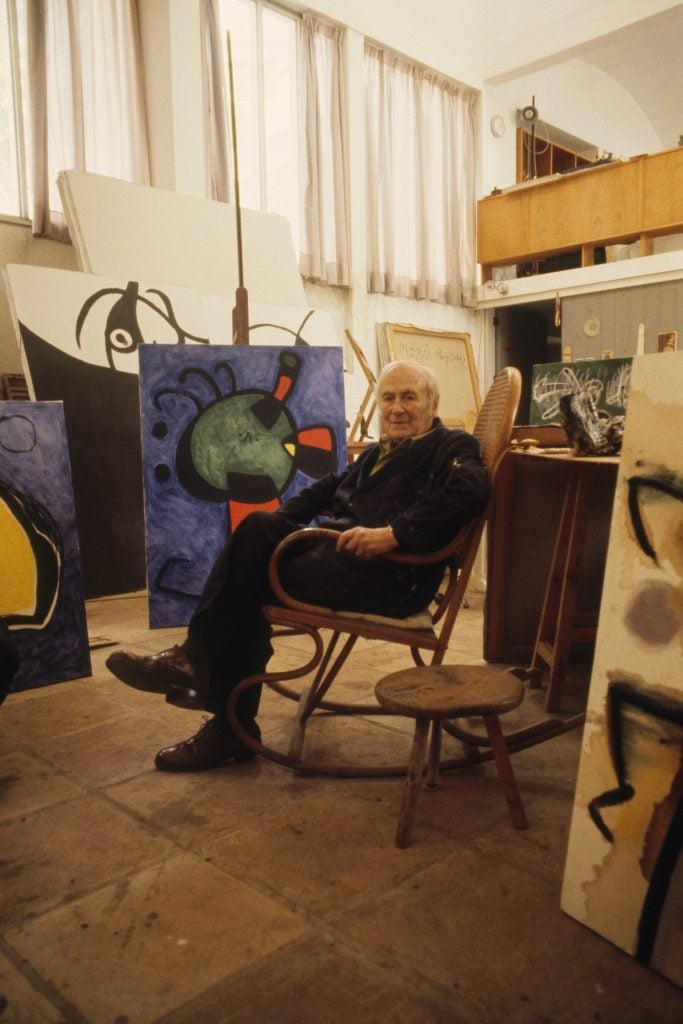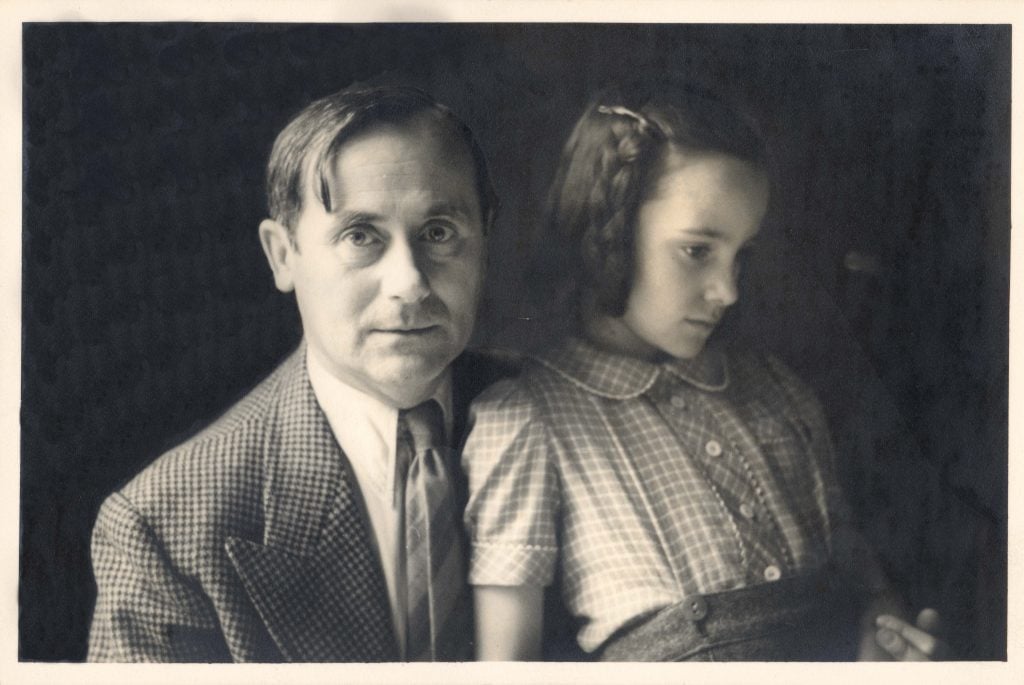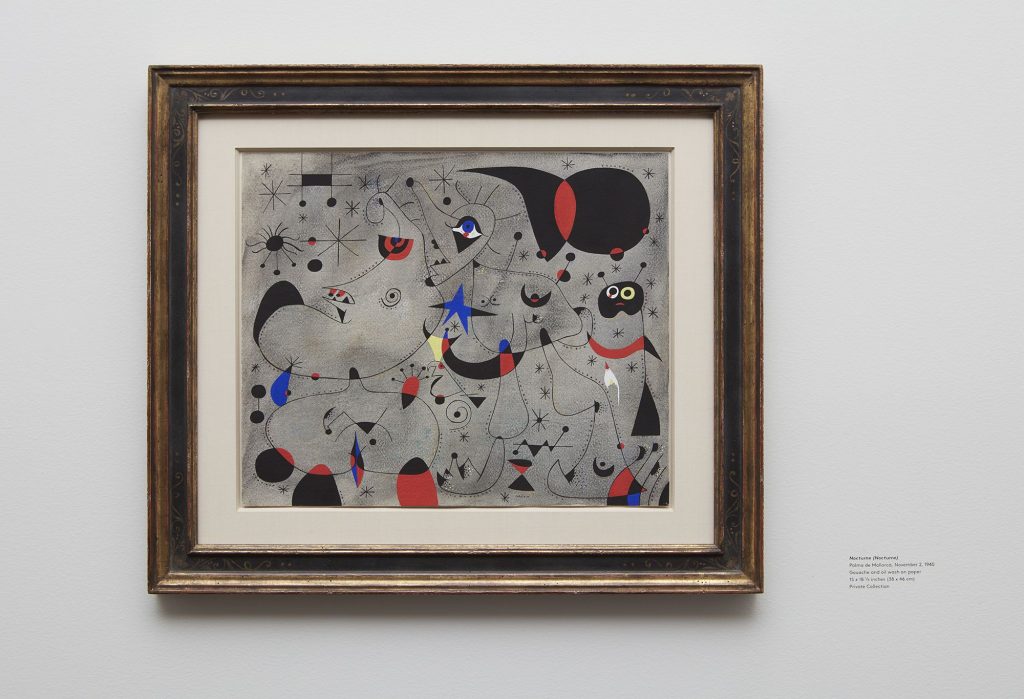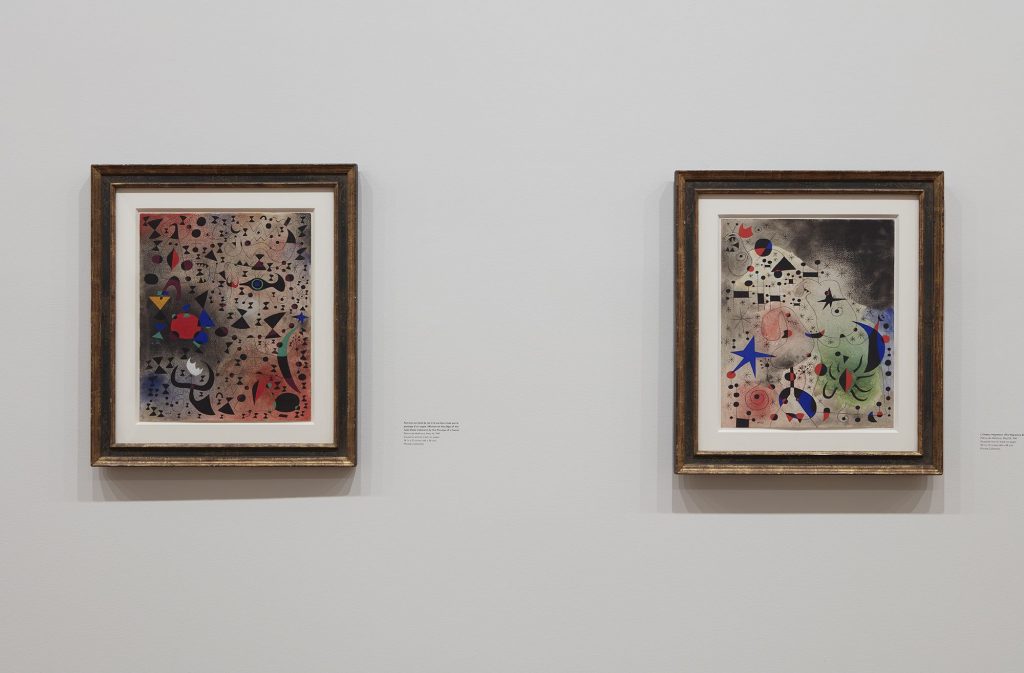Art History
Joan Miró’s Twinkling ‘Constellations’ Actually Sprang From the Chaos of War. Here Are 3 Surprising Facts About the Famed Series
The 23-work series was finally reunited for a 1993 retrospective at MoMA.

The 23-work series was finally reunited for a 1993 retrospective at MoMA.

Katie White

Spanish Surrealist Joan Miró found refuge in the natural world—even during the most turbulent of times. In fact, from January 1940 to September 1941, just as World War II broke out, the artist devoted a series of 23 paintings on paper to his abstract interpretations of nature and music. “I felt a deep desire to escape,” the artist said of this period, according to the Metropolitan Museum of Art. “I closed myself within myself purposely. The night, music, and the stars began to play a major role in suggesting my paintings.” The series, which came to be known as “Constellations”, are beloved by museum-goers and regarded by historians as among the most important and stylistically brilliant works of Miró’s career.
Against backgrounds that range from deep midnight blues to the rosy tones of dawn, the works are are filled with whimsical floating abstract forms, sometimes reminiscent of musical notes; looking at the paintings, one can readily imagine a great cosmic symphony ringing out. But the resolutely joyful series has a surprisingly charged history. Here are three facts about the artist’s acclaimed “Constellations” that might make you see them in a new way.

Joan Miró and his daughter Dolores, Varengeville-sur-Mer, c. 1939. Photograph by Leonar Leigrano. Courtesy of the Fundació Joan Miró.
Joan Miró’s revelatory series emerged against a backdrop of war and chaos. Following the end of the Spanish Civil War and the outbreak of World War II, Joan Miró fled with his family to the village of Varengeville-sur-Mer in Normandy, in northern France. The series was in some sense borne of the artist’s frugal of means of living under constrained circumstances; rather than working on canvas, Miró began painting on small sheets of paper using oil and tempera.
In letters to his dealer, Pierre Matisse, Miró recognized that these works were a powerful moment in his oeuvre. When German troops started to advance on France that spring, Miró returned to Spain, where he quietly completed the series in Palma de Mallorca.

Installation view of “Calder | Miró Constellations” at Acquavella Galleries, in collaboration with Pace Gallery, 2017.
The tumultuous political climate across Europe made it impossible for Miró to showcase the completed “Constellations” series in France or Spain, so in 1944, the artist had the works shipped to New York. The following year, in 1945, with World War II coming to a close, the series was finally displayed at Pierre Matisse’s New York gallery.
Assembling the exhibition had been tiresome. Matisse and Miró had a contract in which the artist owed the dealer the entirety of his output in return for a monthly stipend, an agreement that was complicated by the war. Miró had adamantly refused to ship his “Constellation” works off one by one, writing to Matisse: “I feel that it is one of the most important things I have done, and even though the formats are small, they give the impression of large frescoes…. I can’t even send you the finished ones, since I must have them all in front of me the whole time to maintain the momentum and mental state I need in order to do the entire group.”
Ultimately, however, the exhibition proved a pivotal moment for exiled European artists and intellectuals in the U.S., who greeted the work coming out of Europe with both excitement and enthusiasm. Notably, art historians believe the exhibition had a profound impact on a burgeoning group of young Abstract Expressionist artists in New York, particularly Jackson Pollock.
In many of Miró’s “Constellations”, abstract and geometric forms dance from edge to edge across the paper and without a distinct focal point, with black lines sometimes swirling, connecting the various circles, moons, and starburst shapes—compositional devices similar to Pollock’s “all over” style of drip painting.

Installation view of “Calder | Miró Constellations” at Acquavella Galleries, in collaboration with Pace Gallery, 2017.
From the series’ inception, Joan Miró was deeply invested in keeping “Constellations” united. He believed the works illustrated his changing mental state over the first 21 months of the war, with each painting taking approximately one month to complete. Miró believed that for the works to be fully understood, they needed to be carefully displayed.
But an unexpected hiccup thwarted that plan. Unable to foot the cost of shipping, MoMA rejected Miró’s delivery and the works were rerouted to Matisse, as Miro’s default U.S. representative, who paid for their receipt.
The dealer paid no heed to the artist’s instructions however, and rather than exhibiting all the works together, Matisse put a rotating selection of 16 works on view. Further complicating the display, Miró had given one work in the series, Morning Star (1940), to his wife, and that piece was never shipped to New York.
The works finally reunited for the first time in 1993, at the Museum of Modern Art’s Miró retrospective. In 2017, Acquavella Galleries, in collaboration with Pace Gallery, reunited the collection once more for the blockbuster exhibition “Calder | Miró Constellations.”